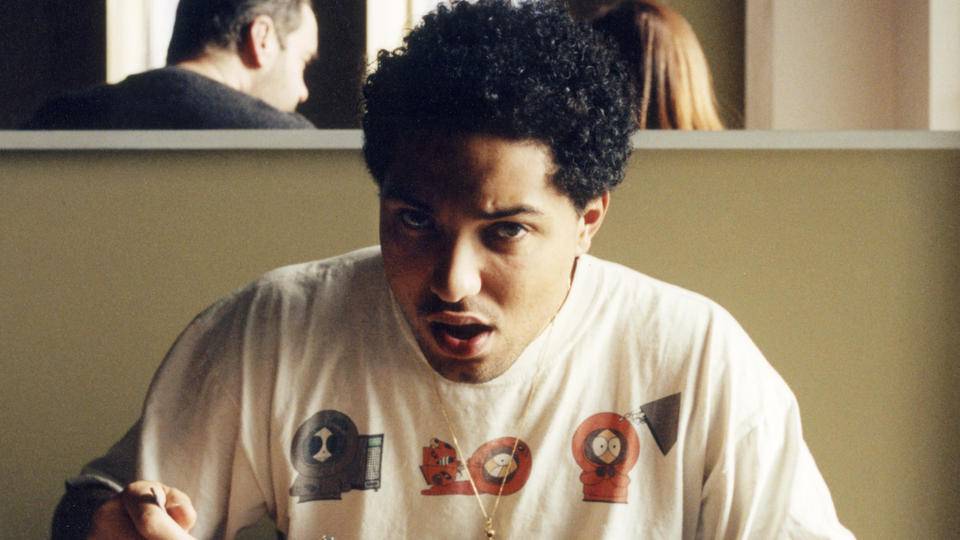Hillary Clinton Or Donald Trump: Who’s Going To Win The US Presidential Election?

It’s been well over a year since the world’s collective fever dream began, with Donald Trump descending an escalator to declare both that he would be running for President and that Mexican immigrants are “bringing drugs. They’re bringing crime. They’re rapists. And some, I assume, are good people.”
Things haven’t really improved since then, but Election Day is finally here and Americans are currently voting for their next president.
So with less than a day before we (probably) find out who will become the leader of the USA in January next year, it’s a good time to ask: what the hell is going on?
Who’s running and who do they represent?
There are four key people in the race – Hillary Clinton (Democrat), Donald Trump (Republican), Gary Johnson (Libertarian) and Jill Stein (Green) – but the race is really between Clinton and Trump.
How Is Donald Trump Even In This Thing?
When Trump first announced that he was running, almost every journalist in the world spilled coffee over their keyboard because they were laughing so hard. No one’s really laughing now.
The reason for their ridicule was that Trump had announced he was running several times previously, only to drop out before actually having his name put on any ballots. He (arguably) did this for free publicity for whatever he happened to be promoting at the time.
But this time was different: Trump soared in the Republican primary polls, and then rarely lost his extensive lead to the other candidates running against him.
The way Americans vote for their president is pretty different to the British system, and this election cycle created a perfect storm for someone like Trump to cut through. In the US, voters can register to be part of a political party to vote for its presidential nominee, who then goes on to compete for the top job.
Okay, But How Did The Primary System Help Him?
Trump ran for the Republican nomination against sixteen (yes, sixteen) other candidates, meaning that there was rarely time in debates for in depth policy discussion. He also totally dominated media coverage due to his understanding of television and willingness to lash out with controversial statements.
By the time other candidates dropped out and the focus was squarely on Trump, it was too late for anyone to beat him. He seized the Republican nomination, despite having no experience whatsoever in politics and no apparent plan beyond “making America great again”.
But he’d also left behind a string of public statements that included suggesting he would force the US military to commit war crimes on his behalf, mocking a disabled reporter, saying that there should be some kind of punishment for women having abortions, and calling for a ban on Muslims entering the US.
So Why Is This Election So Close?
In contrast to Trump, Hillary Clinton has essentially been running for the presidency for more than a decade. Her time in the public eye – as First Lady during Bill Clinton’s presidency and even earlier, when he was Governor of Ankansas – has given her political opponents ample material to draw upon to argue the case against her.
During her time in high-level posts as a Senator and then Secretary of State (basically foreign secretary, like Boris Johnson) she was also involved in controversial decisions, such as voting for the Iraq War.
Clinton and Trump are two of the most unpopular presidential candidates in history, though for very different reasons. Trump is seen by many as vulgar, unprepared, racist and sexist, while Clinton is seen by her opponents as deceitful and opportunistic. It may surprise you to learn that even though Trump is one of the greatest bulls*** artists on the planet, a large proportion of voters see him as being more trustworthy than Clinton.
Do most Republicans actually agree with Trump’s policy?
Aside from this, a key reason Trump and Clinton are so close in the polls is because Republican politicians decided to back Trump. Despite him being widely viewed as a unique danger to the American political system, and holding policy positions disliked by traditional Republicans, party leaders preferred to support him rather than Clinton and the Democrats.
Many high profile members, including the Speaker of the House, Paul Ryan, have endorsed Trump while refusing to appear with him or support his public statements, and have even sometimes attacked him directly.
The polls have shown Clinton far ahead at various points – usually when Trump did something extremely controversial, like attacking a Muslim family who lost their son, a US army captain, in Iraq, or had a tape come out where he made claims about sexually assaulting women – but they’ve become closer in the last couple of weeks.
So Who’s Going To Win?
If forecasting is to be believed, it looks like Hillary Clinton might have clinched it.
There’s still a chance that Trump could pull something out of the bag, especially if the polls are way off target, but at the moment they largely point to a Clinton victory.
Leading analysts put her chances of winning at anywhere between 72 per cent (Five Thirty Eight) and 99 per cent (Princeton Election Consortium). Polls in the US also tend to be more reliable than polls in the UK, so it’s less likely to be another Brexit or 2015 election.
This doesn’t mean her victory will be overwhelming – there could only be a few points in the race – but it does mean she’s more likely to get the votes where she needs them.
How Do They Work Out The Winner?
The American president isn’t elected by a simple majority vote. Instead, each state has a certain number of votes in the electoral college, proportionate to its population, with 538 in total up for grabs. The number of votes each state has in the electoral college matched the number of congressional members each state has.
Technically, people don’t vote for a presidential candidate, similar to the way we don’t vote for Prime Minister in the UK. Instead, US citizens cast votes for electors in their home state, who then form the electoral college and vote for president on their behalf. In some states these electors are allowed to vote for any candidate, but in practice they vote for the candidate people have expressed a preference for. In other states, they are legally bound to vote in line with the population.
Because of this system it’s possible (though rare) to win the electoral college without winning the majority of the popular vote, and this actually happened in 2000 when George W. Bush was elected. Things can also get a little bizarre if' no' 'one 'hits 270 (the required majority to name a president), but the chances of that happening are very small.
Most states allocate their votes as winner-takes-all, so winning a state like California – even if it’s a 50.5/49.5 split – will gift you all 55 of the state’s sweet electoral votes. Whoever hits 270 wins, and Clinton appears to have the lead she needs in the right states to get her over the line.
In any case, there’s not much we in the UK can do. But by this time tomorrow, if nothing happens at the level of the 2000 election recount in Florida, we should know who will be president for the next four years.
--





